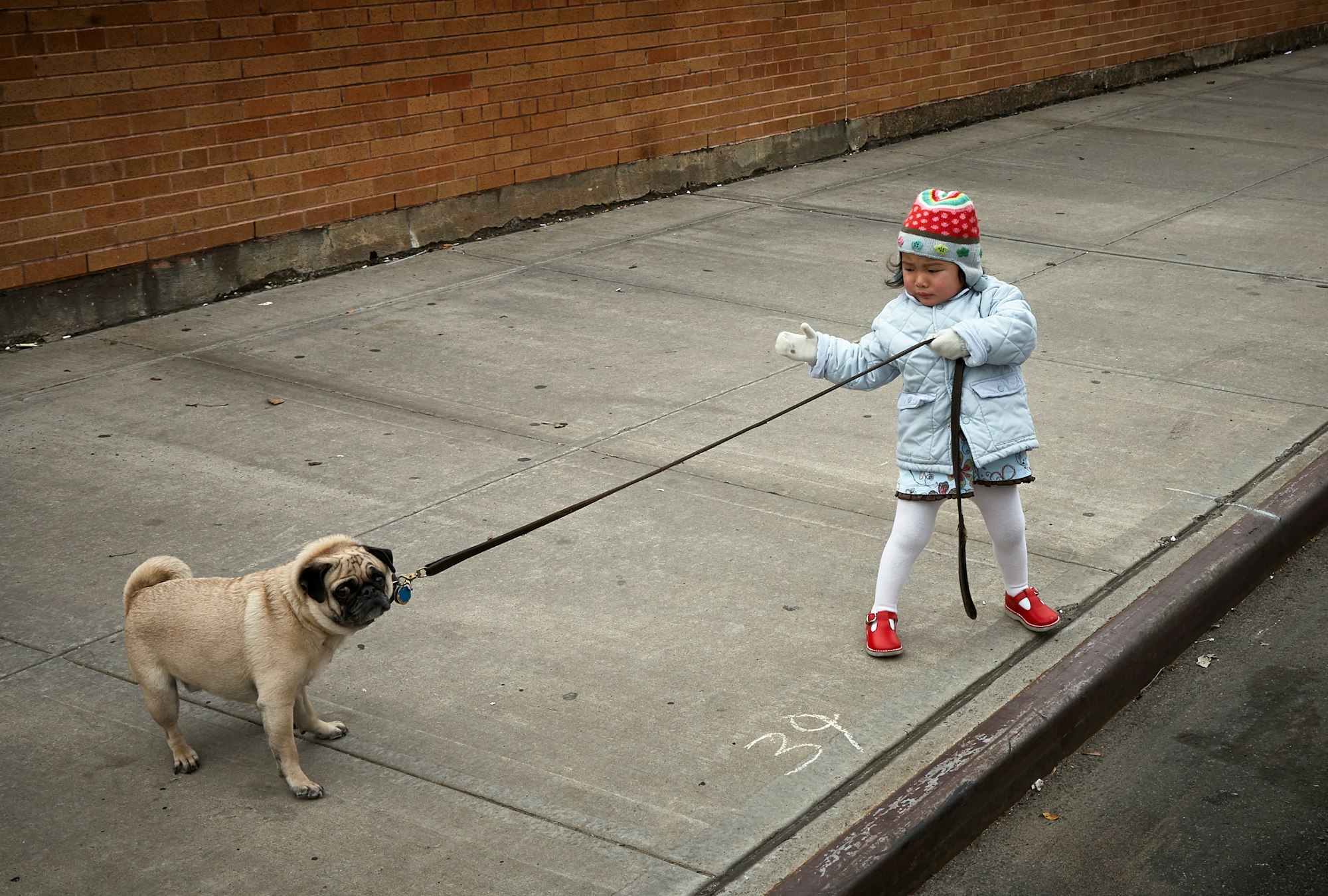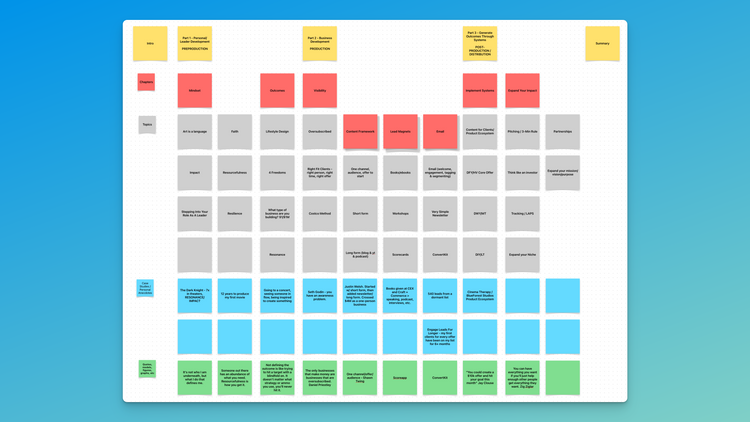Grow Awareness And Trust Through Your Marketing

Which comes first, the audience? Awareness? The product?
Where do you start when you're thinking about marketing?
Many people will say that "the product should market itself", but how exactly do you do that? Is there a proven method to it all?
Well, not that I've found.
In this chapter, however, I'll cover what I've learned from 15 years of having to wear the "marketing hat" in my businesses, and what's worked for myself and others in creative industries.
The Chicken and the Egg of Marketing
Audience first or product first, that seems to be the question.
Do you set out to record an album then hope to find the audience for it?
Or spend years and years writing and performing songs to see what resonates and what audience forms around your music?
My belief is that it's a false dichotomy. There aren't only two options.
As stated earlier in the book, the very first thing to determine is your vision, because your vision informs everything else.
It will help you understand the makeup of the audience you seek to serve.
It will help inform the products or creative works that will best serve and change that audience in a way that fulfills you.
The alternative is to be calculating and opportunistic, jumping on every trend, changing and morphing yourself to whatever you think people will like, and never being fulfilled because you're not being who you are.
Before you start writing songs, or taking photos, or sharing your work with a potential audience, you need to understand who you are and what you're trying to do through your work.
It may feel like a tall order, but don't stress. There's no right answer, and you're not going to be judged or graded by people. The only metric to measure is how aligned your work feels with your greater vision and purpose.
There's No Right Answer
As I said, the "audience first vs product first" argument is a false choice. There aren't only two options, and choosing one or the other isn't inherently right or wrong.
I've seen plenty of people record an album or do a photography project before thinking about the intended audience to great success.
Does that mean you should create the product first?
The startup world will tell you, "NO! You have to build an AUDIENCE first!"
So then people set out to build an audience first and have massive success as well. But people seeing that success try to duplicate it and chase after the audience first without any connection to their vision, and they end up with an audience of fans but not customers.
Then what's the answer? TELL ME!
I can't.
There is no one right answer.
I've written online for more than a decade. I've started businesses and blogs and self-published books, but never to any amount of success.
Yet my own experience has taught me that pursuing what fulfilled me, something that aligned with my greater vision for my life and my businesses, and putting it out there consistently is what ultimately worked.
While my audience is still small in comparison to some, the signals are there that are showing me what is and isn't working, and that process provides a compass of where I'm headed and what to do next.
The Importance Of Awareness
Now that I've been sufficiently vague about answering the product/audience first conundrum, let's focus on what matters.
Awareness.
I've heard Seth Godin say this no less than a dozen times:
You don't have a product problem. You have an awareness problem.
Whether you focus on audience first or product first, in order to succeed you need to have some level of awareness.
Meaning - people know your work exists.
Audience size is fairly irrelevant, because depending on the product you could sell just one thing and be set for life. If you happened to find that one customer in an audience of 10 or 100, all the better, because you didn't have to spend as much time growing a huge audience.
Is the artist with an audience of 100 people but annual revenues of $10 million a success or a failure?
It depends on how you measure it.
But there are plenty of examples of influencers over the years who have built large audiences and yet struggle to have a profitable business.
Are they successful because of the audience size despite not having a resilient business model?
Again, depends on how you measure it.
What we want to get to in our businesses is a place where we have that "minimum viable audience", the smallest number of people that can support our work and allow us the freedom to do our creative work full time.
Generally speaking, a business that can pay us $100k a year in salary.
What that audience size looks like for you will be determined by the products or services you sell, and how much you sell them for.
You may only need one client at $10,000 per month.
Or you need 1,000 people to pay you $120 a year
Or 10,000 people who will buy your $12 album every year.
In order to get that minimum viable audience, people first need to discover that you exist.
Your marketing efforts are a promise that you're making to your current and potential audience.
"If you listen to this music you will feel better"
"These photographs will look great in your home or office"
"My design work will elevate your brand"
"My coaching will help improve your life"
These messages are implicit rather than explicit, though I guess you could just outright say what you are trying to say.
"Watermelons for sale" is a perfect message for someone who wants to buy watermelons.
But "My new album is out today" probably doesn't have the same affect on an audience that doesn't yet know you or trust in your music's ability to help them feel the way they want to feel.
That marketing message might work on your existing audience, but in order to grow your audience you need to get the awareness of people who don't yet know you exist.
The messages to that group of people need to include more context and help them understand how your work will change them.
You're not a commodity like a watermelon.
You're a creator. An artist. A maker. A builder.
The way you gain awareness for your work should help people understand what will change if they engage with it.
It wasn't until I landed on the marketing message that is the subtitle of this book that things started to click and work for me, and my audience started to grow.
"How five-figure creators can build six-figure businesses."
There is clarity on who it's for and what it does. Simple and straightforward.
But from that one sentence came this book and a dozen new ideas for products and services I could create to help creators get that outcome.
All because that sentence stems from my vision of helping creators build resilient businesses and have the freedom to create the work they feel compelled to create.
Because art and music and photography and businesses and creators make the world a better place.
I don't wanna live in a world without art and creativity.
So my vision is to do all that I can to support creators.
Vision first. Then find and connect with an audience of people and create things for them that help them change their lives in the way they want to be changed.
A song that helps lift someone's spirit.
An image that helps someone feel understood or connected.
A commercial project that helps a client reach new customers.
The audience then becomes your compass
Once you've connected an audience and a vision and start creating for them (in whatever order you see fit), what's amazing is that the audience becomes a compass you can use to guide your way.
Last week my little one-person business crossed $1.3M in revenue.
— Justin Welsh (@JustinSaaS) October 26, 2021
It took 810 days, I ran zero paid ads and operate at a ~98% margin.
Here are the 14 steps of my strange journey:
Hope it's helpful to someone.
[🧵 thread]
Part of the steps that Justin outlines in that thread is that the audience told him what they wanted from him, and he made it.
Now, if you're an artist or a musician this approach may be too calculated. You don't always want your audience to tell you what music to write.
But you will start to see what music resonates with them the most. What songs are people singing along to at your shows? Which ones get the most streams on Spotify?
That could help you decide on what tone to use in the next album, or what topics work best.
My friend Faith Marie realized early on that the more she wrote about her anxiety or depression or struggles with mental health, the more she connected with her audience that finally felt like an artist understood what they were going through.
When I first heard that song I nearly cried because I couldn't believe a girl so young could have such incredible emotion and connection through her music. We made this music video and it's now been viewed over 5 million times, because she connected with an audience who then shared her music and helped her gain more awareness.
My friends Alan and Jono started a YouTube channel that blew up in 2020 because people needed help with the emotional struggle of being quarantined and losing jobs and everything else. Their channel, Cinema Therapy, has grown to nearly 1 million subscribers in just under 18 months.
Both of these are examples of creators making something that they were passionate about and then getting it in front of the right audience through their marketing.
Their work delivers on the promise. Faith's song helps you feel better. Alan & Jono's channel helps bring clarity to your life and helps you feel better.
They both cause a change in those that see it and hear it.
The more they create, the more their audience grows, and the more feedback they get on what's working and what isn't.
They can then choose to do more of the same or expand out from there depending on what their audience compass is showing them.
What to do about all of this
I've been verbose in this chapter because there's a lot to say. But to try and summarize and provide some key takeaways:
- Connect your work to your vision and purpose
- Understand the change you hope to affect in people
- Share what you're making with the people you hope to change
- See if it works
- If yes, do more of the same
- If no, either keep going and try a different angle, or experiment with new ideas or new ways to get awareness
One thing I can tell you is that you'll never gain a minimum viable audience if you never share your work.
The audience has to have something to become aware of, which means you need to be creating often and sharing often.
The more consistently you do so, the more people will become aware of your work and the more you can grow. It all compounds once you find something that works.
Sometimes that experimentation can take a few months, other times it may take years.
But if you have connected your work to a greater purpose, you'll have the resilience and grit to keep going and keep going and not give up too early.
NEXT CHAPTER >

< PREVIOUS CHAPTER








Member discussion